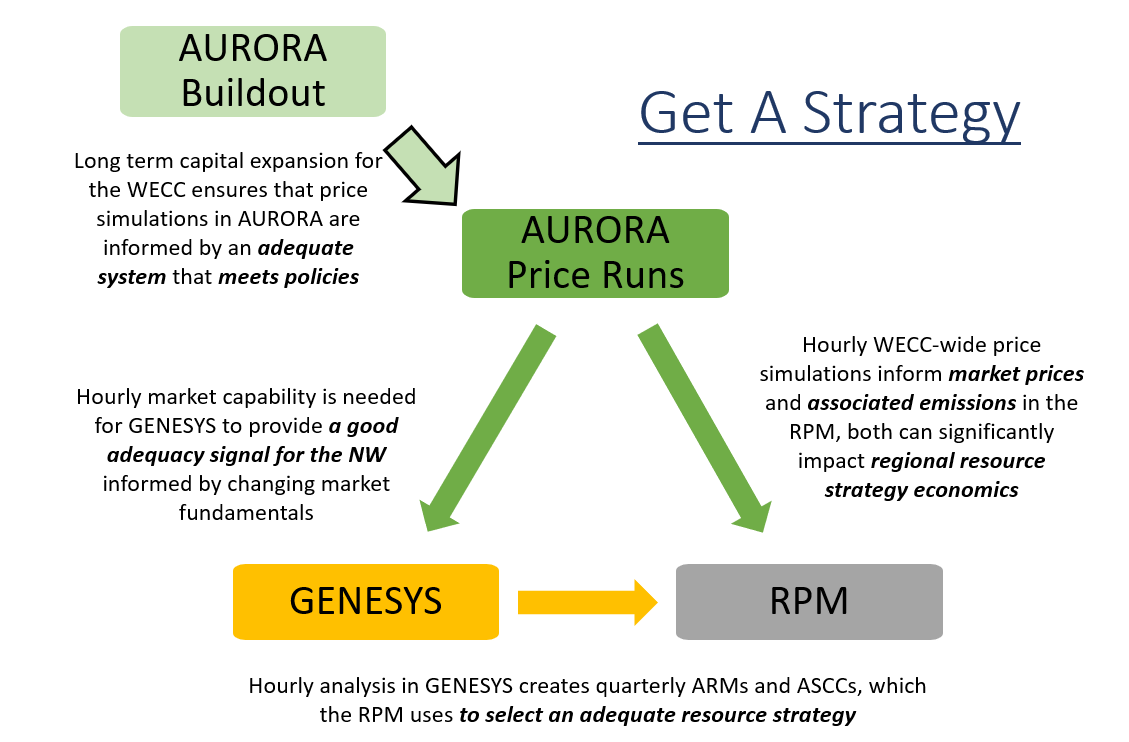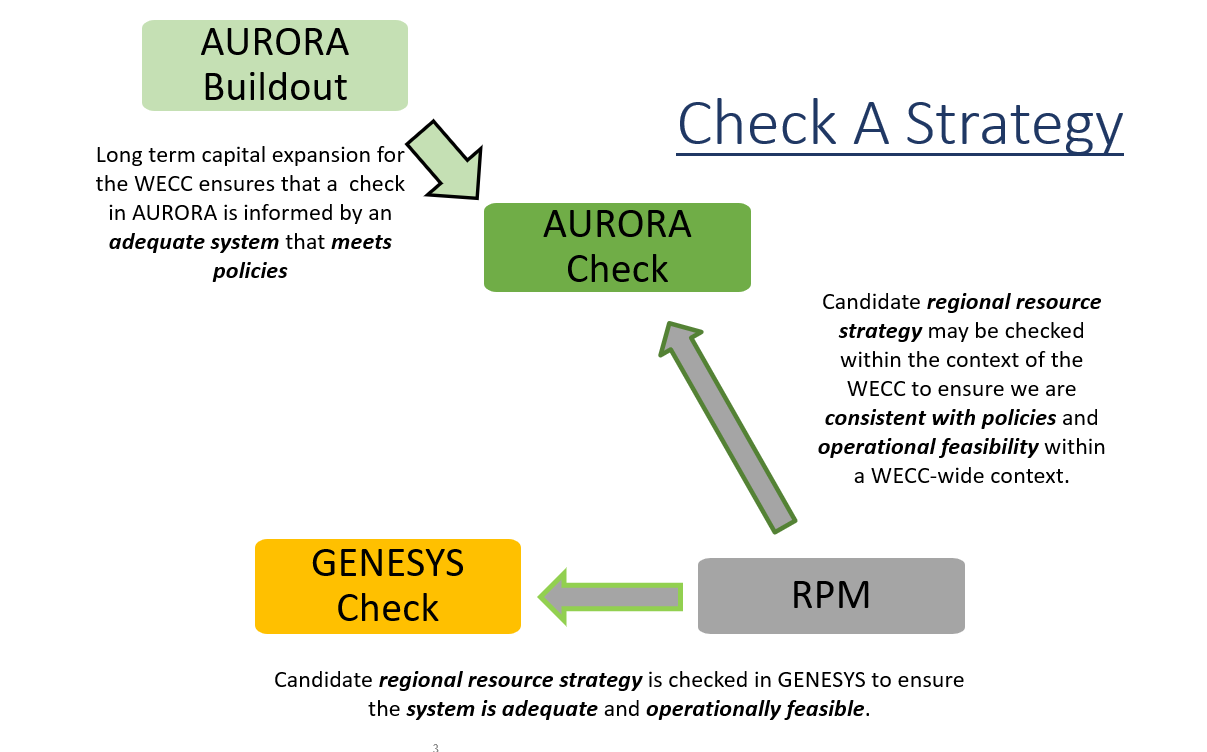The Council uses many models to support the analyses of the power plan. Each model is designed and configured to answer different questions about the power system. The Council uses three models primarily to understand cost and risk tradeoffs associated with different resource portfolios representing the bulk power system, west-wide or in the region. A model for evaluating costs and risks associated with different regional strategies over many future power system environments is the Regional Portfolio Model (RPM). A model used to evaluate hourly system operations within the region and adequacy is GENESYS. A model used to evaluate hourly operations and market fundamentals across the western grid is AURORA.
Using information from all these models and other Council analytical work, the Council is able to characterize the tradeoffs of different resource strategies explored in the plan. In the following sections, there is a description of the Council models’ capabilities:
- Classic – Regional and Federal
- Redeveloped
Per the limited capability of each of the Council’s power system models it is often important to pass information from one model in a particular format that is useful to another. These information transfers are documented in our process flow presented many times throughout the plan as the buildup to developing and evaluating different resource strategies.


The transfer of information between the models is catalogued in the following links:
Outputs from Classic GENESYS, inputs into AURORA
Outputs from Classic GENESYS, inputs into Redeveloped GENESYS
Outputs from GENESYS, inputs into RPM
Outputs from AURORA, inputs into RPM
Outputs from RPM, inputs into GENESYS
Outputs from AURORA, inputs into Redeveloped GENESYS
These transfers of information are often too data intensive to be done via Excel and are thus facilitated via R[1] scripts. An example of some of these programs that reformat data are summarized below:
- An R-script that transforms the classic GENESYS output for end-storage into target storage constraints for the redeveloped GENESYS
- An R-script that transforms outputs from the Council’s load forecast model and incorporates hourly shapes for energy conservation to become input data for the redeveloped GENESYS
- An R-script that transforms the daily climate scenario modified streamflows developed by the River Management Joint Operating Committee (RMJOC) into average weekly modified streamflows for input into the redeveloped GENESYS.
- An R-script that transforms the AURORA output for Western Electricity Coordinating Council (WECC) generation capability and dispatch cost into available import power market supply and associated power prices for the Northwest for input into the redeveloped GENESYS model
- From outputs of the load forecast model, an R-script that calculates coefficients of the linear regression model that fits the time-series of the ratios between two levels of weather-normalized loads
- From outputs of the load forecast model, an R-script that estimates standard deviations for the time-series of the ratios between the quarterly averaged and the yearly averaged weather-sensitive loads
- Both the linear regression model coefficients and the standard deviations become inputs into the RPM
[1] R is a free software environment specializing in statistical computing and graphing. https://www.r-project.org/. These scripts are available upon request.


